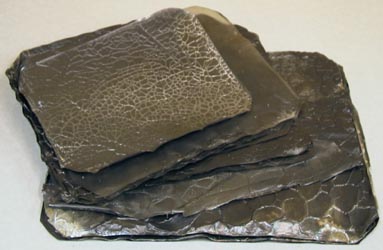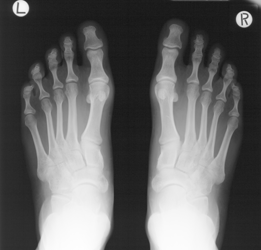In LHSA, we strive to give our different service users access to our varied collections. However, there are cases when collection items are too fragile and there is a serious risk of damage and deterioration associated with their handling. In some instances, our team considers the production of high-quality physical and digital surrogates and substitutes that help us preserve irreplaceable items while ensuring collections are still accessible for research and teaching.
Production of Surrogates
LHSA produces surrogates so that access to original items and the risk
of damage associated with access may be reduced. A surrogate can also be used
for display where the conditions are not suitable for the original. Wherever
possible, a high-quality surrogate is produced to recognised standards since it
may also serve as an additional means of long-term preservation of the
informational content of the original item. Priorities for surrogacy are those
items of particular historic significance or in such poor condition that the
informational content is at risk.
LHSA often uses digital images in TIF format as surrogates. These are produced in-house using our digital reprographics equipment or by a commercial company as appropriate. The images and their metadata are stored in a database for access. Because LHSA is yet to establish a trusted digital repository, these images are not relied on as a means of long-term preservation of the informational content of an original item. For this purpose, a master copy preservation microfilm is produced, and a working microfilm is created to serve as the surrogate. The digital images and microfilm for surrogacy are often used in collaboration to best meet the preservation and access needs of a particular collection item.
Where a surrogate copy is produced, the work undertaken is documented, and appropriate storage for both the original and the surrogate is provided. The LHSA catalogue is also amended to indicate where a surrogate is available for consultation.
Individual examples of digital surrogacy include facsimiles created for Charters of the Royal Infirmary of Edinburgh (RIE) and the Royal Edinburgh Hospital. These have been used for open display and reproduced in poster format providing background to the hospitals' histories. More on these in the coming weeks!
Digital
surrogates have also been produced on a series level, for example, RIE and
Associated Hospitals case notes held in microfilm copy only. In this instance,
the digital surrogate is used for access, and an additional preservation
microfilm is produced at the same time to secure the long-term preservation of
the informational content of these records. This work is detailed in the case
study below.
 |
Case
study: NHS hospital records microfilms
Background
During
the 1960s and 1970s, NHS hospital records committees, chaired by senior
doctors, frequently chose to microfilm series of case notes rather than
retaining the originals, which were subsequently destroyed. A number of these
microfilms have been accessioned and due to the poor film quality of the originals
are at risk of deterioration.
Treatment
Work
was carried out over the period 2000-2007. After a careful search of services
offered and cost comparisons, Transmedia Technology Limited (TMT), a
Swansea-based company, was selected to carry out the work. Original microfilms
were transferred to and from TMT by courier. The original microfilm was washed
and the spool replaced. A microfilm copy was produced and the film scanned at
300dpi, with the images saved as multiple TIFs. A master and a copy version of
these images were saved to CD. The images were scanned by TMT using PixEdit
software. On return, the image quality and the labelling of the copies were
assessed and, once deemed satisfactory, TMT was instructed to remove all copies
from their systems. All work was fully documented.
Master copies of the original microfilm and the CDs are boxed and stored in The University of Edinburgh Main Library. Microfilm and CD copies have been boxed and stored off-site.
Conclusion
Through services purchased from TMT, the original microfilm series has been preserved and surrogates produced to aid future access. Treatment of the remainder of the collection of case notes in microfilm version only is ongoing, as is an appraisal of LHSA’s digital assets and provision of a trusted digital repository.
Production of Substitutes
Substitution is undertaken only if the item is at
serious risk of deterioration. This is determined when it is past the point at
which the informational content is accessible and/or the material nature of the
item poses risk to health and safety or the long-term preservation of other
collection items. All other options are explored first, and the decision to
substitute is carefully taken with a full understanding of the implications.
LHSA demands the highest quality of production of the substitute to recognised
standards, and acknowledges that the format chosen for the substitute may have
an impact on its longevity.
 |
Extensive documentation is undertaken to record the
substitution and, wherever possible, an example of the item in its original
format is stored safely to act as a reference sample to accompany the
substitute.
LHSA has used substitution to address the risks
associated with cellulose nitrate and poor condition cellulose acetate
x-radiographs in the collections.
Case study: Digitisation of the x-ray collection
Background
LHSA collections include c.20,000 x-rays originally
on cellulose acetate, cellulose nitrate and polyester film base. They relate to
hospitals in the Lothian region and a series of patient case notes held.
Serious concerns regarding the x-rays in their original format were identified,
including low potential usage due to limited available cataloguing, the
inappropriate and inefficient current storage system, and the degraded – and,
in the case of nitrate film, flammable – nature. The condition of the
film-based x-rays also posed health and safety risks to the staff and the
potential to accelerate deterioration of paper-based collections held in the
same storage area.
 |
Cold storage for the whole x-ray collection was not
a realistic and sustainable long-term solution for the volume and condition of
the x-rays held and the decision to digitise and dispose as appropriate was
carefully taken. A small collection of x-rays (relating to the Dott case notes)
to serve as a reference sample, and any x-rays too fragile to undergo the
digitisation process have been preserved in cold storage.
Treatment
Liaison with Transmedia Technology Limited, who had
previously digitised LHSA’s historic microfilm, determined the scanning
parameters. Professor Jonathan Best, Radiologist, acted as a consultant to
ensure that no medical information was lost in the digital version. The x-rays
have been scanned at 300dpi, 16-bit and saved as TIFs on master and copy DVDs.
Work to accompany digitisation included assigning a unique ‘X’ number to the
x-rays for a given patient, packaging and labelling the x-rays for transit and
scanning, compiling an Excel spreadsheet to enable future access to the
collection, and a comprehensive quality control check of the substitutes
produced.
Conclusion
The work to digitise the x-ray collection was an
ambitious project, which, through successful execution, has met the
preservation needs of both the x-rays and the paper-based collection items in
the Archive. Investigation into means to promote use and the need for any
future migration of data to ensure long-term accessibility to LHSA’s digital
assets is ongoing and led by the LHSA Archivist.

No comments:
Post a Comment